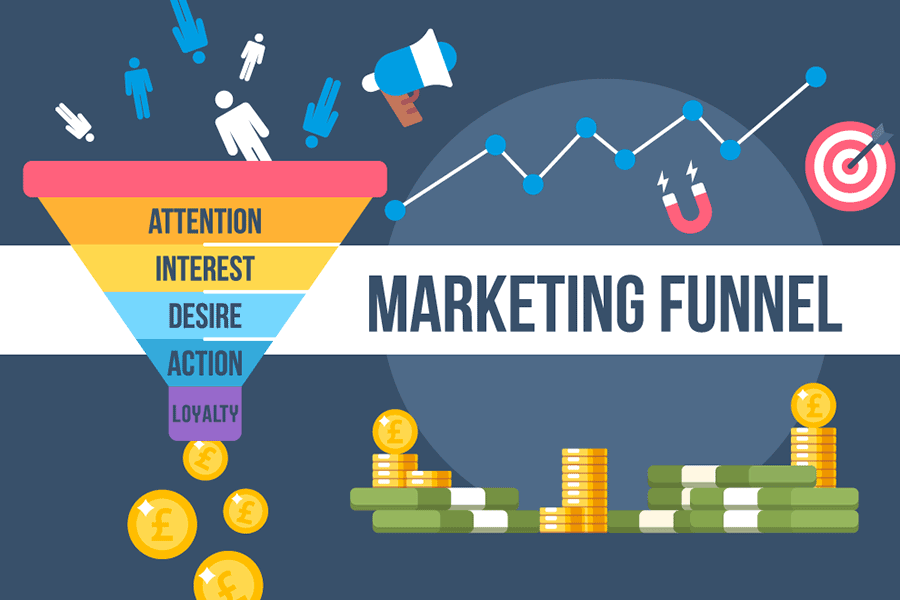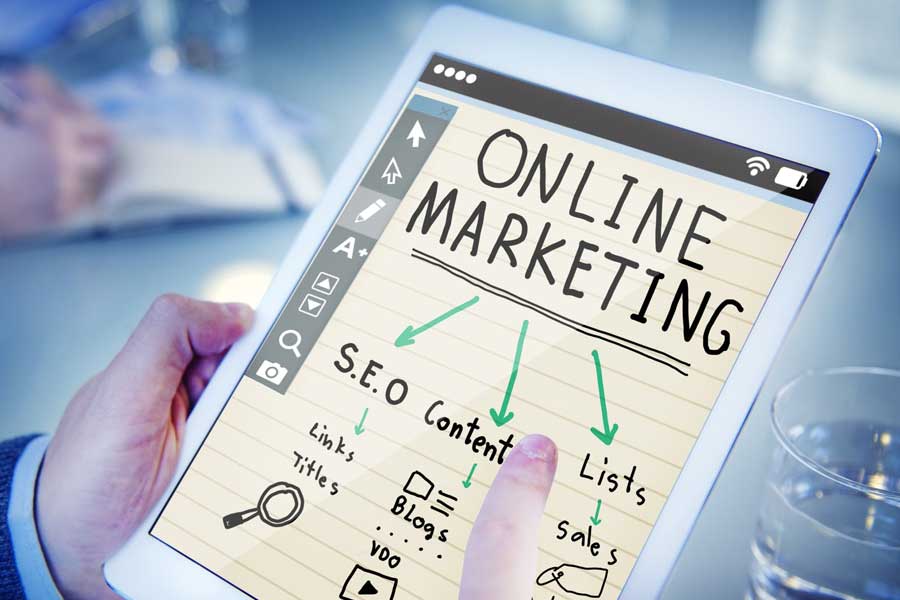Franchise success relies on embracing digital marketing. With the rise of online search, social media…
Understanding the marketing funnel

There are different variations of the marketing funnel, in this blog I’ll be referring to the funnel with 5 stages: Awareness, Interest, Desire, Action and Loyalty.
Awareness
The first stage is about creating potential customers aware that your product or service exists. Without knowledge about your business customers won’t even be able to consider choosing your product/service the next time the need arises.
The main method of gaining audience awareness is through advertising campaigns that focus on brand awareness as opposed to sales or conversions – because at this stage it is more important to create a strong brand image and make sure that it’s in the minds of the people. Some methods to achieve this are by:
- Blog posts that offer knowledgeable insights that would be of interest to your target audience. E.g. creating a blog about the nutritional needs of the body to attract fitness enthusiasts and suggesting your product as a great way to ensure they receive the nutrients they need. Also ensure that when writing these blogs, you keep SEO in mind.
- SEO can be a great way to rank in search engines, this will improve the reach of your website when users search for words related to your product/service.
- Brand awareness campaigns are a great modern way to reach your target audience and get your brand out there. Running video ads on platforms not only can be cost-effective but allows you to build a better image as a short video, even a few seconds, can create a greater impression than a still banner.
Interest
The first stage is about getting the audience’s attention, this stage is about keeping it. You’ll want to explain the benefits of your product/service and relate to the customer. By doing this you’ll be planting the seeds for a potential future purchase. A few methods to gain your audience’s interest are:
- Retargeting is a type of advertising, where your ads are only shown to those who had previously visited your website. It can be an effective way to reaffirm the benefits of your product/service to a user whose attention was gained.
- Case Studies/Testimonials can help highlight the effectiveness, quality and usefulness of your product/service. In addition, it can create trust between your company and the user as it validates your product/service.
- Email marketing is a great way to send tailored marketing emails to different groups of people. It allows you to craft a specific message to peak users’ interest based on demographics, location, festivals etc. This as well as the ability to track the performance of emails can help gain a lot of insight for future marketing campaigns.
Desire
For this stage in the marketing funnel, you’ll want to turn your customers “I like it” attitude” into an “I want it” attitude. A way to create desire is by building trust, excitement and maybe a little incentive. You can build trust by continuing to reinforce your brand image and how well you serve others. Excitement can be built in many ways such as highlighting features of a product and showcasing how much it’d benefit the customer. Some ways to create desire are:
- Online videos are a great way of getting people to want your product or service as they can make the product seem even more appealing. Many customers tend to browse their options before making a purchase – and a factor that determines what they’ll pick is the amount of information and content available for a product/service. If they had to choose between two products, of which one only had online reviews and another had online reviews and videos, they’ll more likely choose the one with the video as they have the information to imagine themselves with it.
Action
This is the final stage of the marketing funnel the customer goes through before pulling the trigger. The steady work put into the previous stages all lead to this point – and in order to not dissuade people from taking action, you’ll want to ensure that everything is in order to facilitate the purchase. Some ways you can do this:
- Reducing friction in the purchasing process can be a subtle, yet effective way to increase conversions. Ensure the act of purchasing itself is free of hassle or obstacles that may result in users leaving partway through. This includes making sure that your website operates quickly and smoothly as long load times can be a deterrent to potential buyers.
- Incentives can help be the deciding factor for a potential customer becoming a customer as it helps give them that last little push to purchase, if they were considering it then a limited time offer or free delivery can be a great motivator.
Loyalty
Continuing to market to and more importantly support customers after they’ve made a purchase is vital. Existing customers are far cheaper to retain and they’re more likely to make another purchase. It also improves the way these customers interact with the brand and speak about it to others. Taking the time to build up a loyal customer base can attract new customers through word of mouth advertising. Which is one of the most powerful forms of advertising there is. You can improve customer loyalty by:
- Email marketing can also be used to keep customers engaged after they’ve made a purchase. This can be sending special discounts or promotions and updating users with relevant information about the company and new products.
- Loyalty schemes are a really effective way to improve customer relations by rewarding them for repeat purchases or for referrals. This helps ensure that customers are more likely to continue using your products/services instead of competitors.
- Newsletters, not to be confused with email marketing, newsletters although normally delivered through email are much less sale focused and thus can be a more relaxed and friendly method of communication with your customers.
Understanding and improving your marketing funnel can be key in the success of your business.
See our blog for more Web Performance Tips.
Connect with us on LinkedIn.



